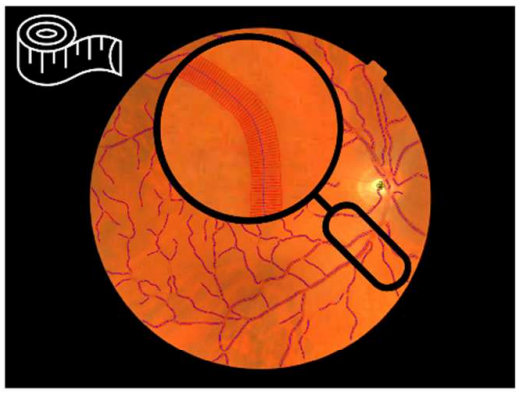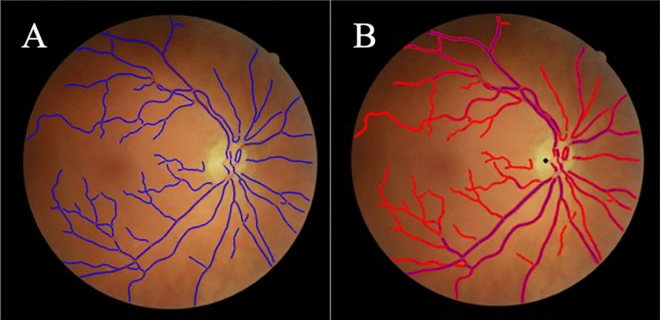Publications
Group highlights

Retinal imaging offers a non-invasive means to assess the circulatory system, with morphological features of retinal vessels serving as biomarkers for systemic disease. QUARTZ (QUantitative Analysis of Retinal vessel Topology and siZe) is a fully automated artificial intelligenceenabled retinal vasculometry system designed to process large-scale retinal image datasets to obtain quantitative measures of vessel morphology for use in epidemiological studies. Previously reliant on traditional image processing and machine learning, QUARTZ has now transitioned to a deep learning pipeline. Currently individually trained versions are tailored to specific datasets. Evaluation using the UK Biobank retinal dataset shows improvements in performance metrics - the F1 score for vessel segmentation increased from 0.7753 to 0.8472, accuracy for the A/V segment-level decision increased from 0.8524 to 0.9022, the detection rate for optic disc localization increased from 0.9760 to 0.9933, and the F1 score for image quality classification increased from 0.8872 to 0.9750.
Welikala RA, Fajtl J, Johnson G, Rahman F, Podoleanu R, Remagnino P, Freeman EE, Chambers R, Bolter L, Anderson J, Olvera-Barrios A, Warwick A, Foster PJ, Shakespeare R, Ganguly R, Egan C, Tufail A, Owen CG, Rudnicka AR, Barman SA

To evaluate the test performance of the QUARTZ (QUantitative Analysis of Retinal vessel Topology and siZe) software in detecting retinal features from retinal images captured by health care professionals in a Danish high street optician chain, compared with test performance from other large population studies (i.e., UK Biobank) where retinal images were captured by non-experts.
Freiberg J, Welikala RA, Rovelt J, Owen CG, Rudnicka AR, Kolko M, Barman SA
PLOS ONE 2023; 18(8), e0290278